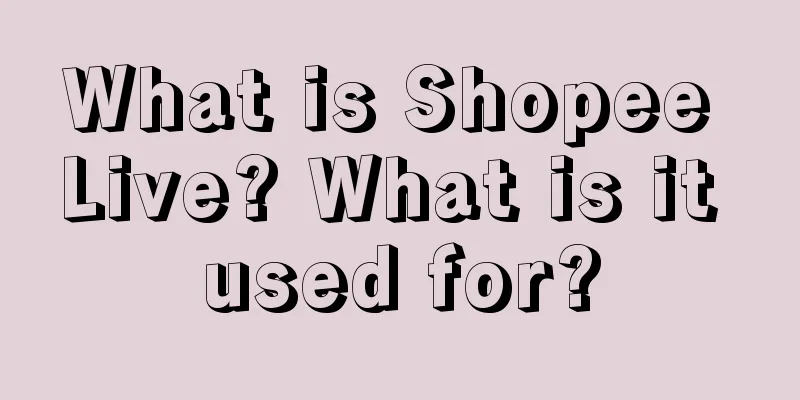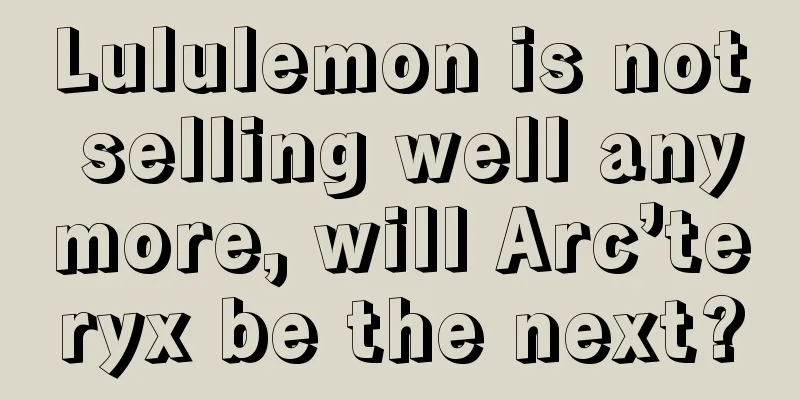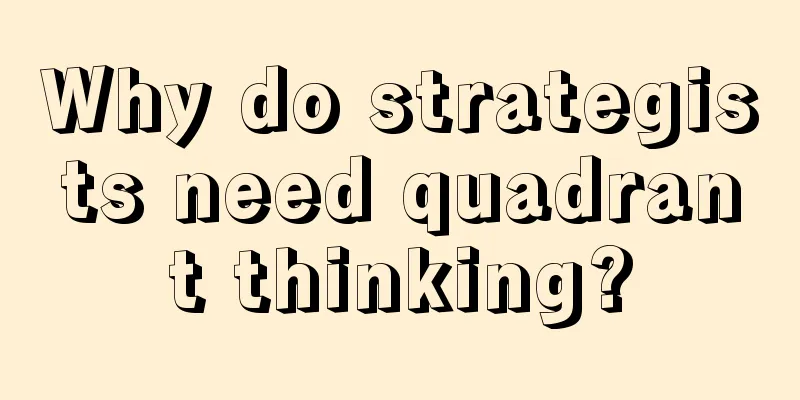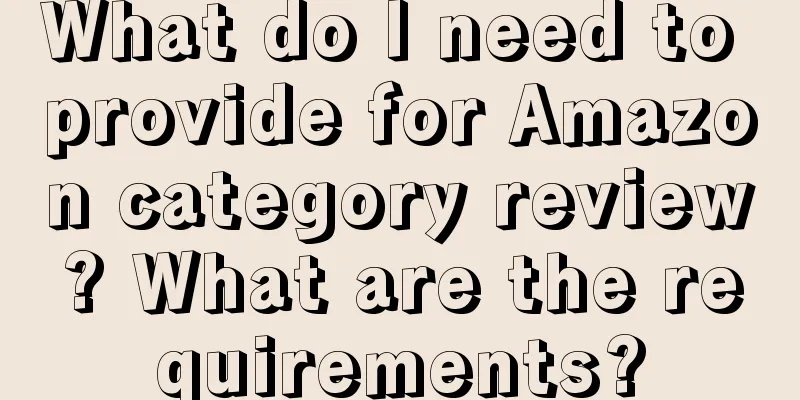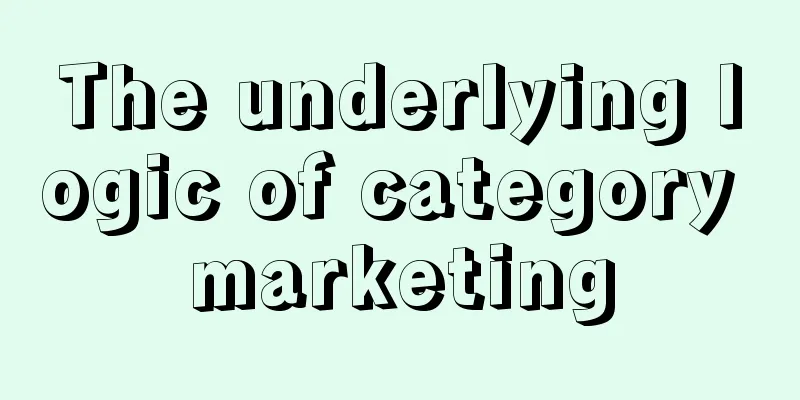Fogg Behavior Model: The nuclear power that ignites behavioral change

In 2022, I read a book on WeChat Reading that was regarded as a masterpiece, which was BJ Fogg's "Fogg Behavior Model". When I first finished reading this book, I really failed to realize what was so extraordinary about it, and even thought that it did not deserve the praise of "masterpiece" at all. However, when I integrated the theoretical knowledge into my subsequent work and life, and carefully observed personal behavior, business activities, and various APP interaction cases, I suddenly realized that this book is truly a masterpiece! It is simply the underlying methodology of behavior! Next, I will explain the underlying methodology to you by combining Fogg's behavioral model theory and actual cases. 01 Fogg Behavioral Model TheoryFogg's behavioral model points out that the occurrence of a behavior requires three elements at the same time: motivation, ability, and prompt. Motivation is the desire to do something, ability is the ability to perform a certain action, and prompts are signals that remind you to do something. Motivation: An internal driver of behavior that can stem from a variety of needs, desires, values, or goals. When people are strongly motivated, they are likely to take action. Ability: refers to the feasibility and ease of taking action. If a behavior is too complex or difficult, it may be difficult to put it into practice even if the motivation is strong. Prompt: refers to the signal or opportunity that triggers the action. It can be an external signal, reminder or some factor in the environment. Next, we will introduce some key points of the behavior model in more detail based on the Fogg behavior model theory curve, as shown in the figure: First, without a prompt, no matter how strong the motivation and ability are, there will be no behavior. Second, only with both motivation and ability can the behavior fall above the action line. If either side is weak, the other side needs to be stronger. So what should you do if you want to change your own or someone else's behavior? You should follow the steps below and try them one by one in order. Step 1: Check for behavioral cues. Step 2: Check whether there is capacity for conduct. Step 3: Check whether there is any motivation for the behavior. Because it’s easiest to start with the prompt. In most cases, the root cause of some behaviors being difficult to do is not a lack of motivation. Simply finding a good prompt or making the behavior easier to do can solve the problem of the behavior. Next, we will further study the Fogg behavioral model based on actual cases in the product field, social public field, and personal life field. 02 Application of product fieldsIn the product field, especially in the field of user activation, "prompts" (also called "triggers") are widely used in the form of notifications such as emails, text messages, apps, and phone calls. The content and purpose of triggers are diverse, such as: e-commerce package progress, promotional information, new WeChat messages, Moments updates, user recalls, latest news developments, order payment notifications, reminders to exercise and sleep, etc. These seemingly diverse touch contents are actually all related to prompts. The Fogg behavior model divides triggers into four types based on the user's motivation and ability:
For example, if you add a product you like to an e-commerce app but have not placed an order, a few minutes later, the customer service will contact you and tell you to hurry up and place an order. This is actually a signal trigger. Or, if you communicate with the store clerk and express that you really like the product, but the price is a bit high, the store clerk may give you a coupon to encourage you to place an order, which is an assisting trigger. Or, if you can afford to buy it but have been hesitating, the boss may tell you that this dress is very suitable for your temperament and is definitely a date dress. This is a stimulating trigger. So, how should products or operations apply different types of triggers? First, we need to analyze users, find out the reasons why they do not take action, and deal with them separately. We need to objectively stratify users and analyze why they do not take action, whether it is insufficient motivation, insufficient ability, or insufficient prompts. Of course, not all reasons can be identified, so you can refer to the third suggestion. Secondly, when designing triggers, we must follow the principles of human nature. We can refer to the six principles in "Influence", namely: reciprocity, commitment and consistency, social identity, authority, favorability, and scarcity. Again, there is no fixed method. You can try different forms of triggers and conduct AB tests to find the best solution. If the triggers used after the first step of user identification still do not work, you can use other forms and apply them flexibly. You should also conduct AB tests to find the best solution through experimental comparison. Finally, I would like to remind readers that the content and frequency of triggers should be carefully designed to avoid user backlash. Triggers should always be in the best interests of users. Otherwise, users will block notifications or even uninstall the software, causing users to be lost forever. In conclusion, if your product can meet human needs and use the user's internal triggers, then congratulations! Your product is truly invincible. For example, TikTok always meets human needs for instant entertainment, and combined with the recommendation algorithm, people are always unable to stop watching TikTok, and even unconsciously pick up their phones to watch TikTok. 03 Application in personal lifeIn the field of personal life, Fogg's behavioral model can help us develop good habits or get rid of bad habits. Next, let's look at some real cases. Case 1: Develop the habit of getting up early and exercising every day Motivation: Desire to have a healthier body, increase energy, and improve body shape. Ability: Keep your workout to 30 minutes or less and choose simple aerobic exercises such as skipping or jogging. hint: ① Set multiple alarms to go off 5 minutes before getting up, 10 minutes before getting up, and 10 minutes before exercise. Put up slogans on the bedroom wall to motivate yourself to exercise. ② Prepare sports equipment in advance, place it next to the bed or wear it directly to sleep, so that you can remind yourself to exercise when you wake up. Suggestion: When I started running, my motivation and tips were fine, but my ability was too poor. So, I didn’t challenge myself to run 5km or 10km at first, but chose to run 3km in combination with running and walking, and gradually improve my ability. Case 2: Let children develop the habit of washing dishes Motivation: Let children participate in family affairs and exercise life skills. Ability: Children do need to keep learning in order to wash dishes better. hint: ① Communicate with your child in advance and explain the significance of the matter. ② Arrange household chores and remind children through the schedule. Suggestion: It is difficult to develop a habit in one go, so you can do it step by step. If you want your child to wash the dishes and participate in housework, you can first consider training your child to pick up the dishes and bring them to the kitchen, and then move forward step by step. Case 3: Breaking the habit of checking your phone before bed Motivation: To realize the serious impact of using mobile phone before going to bed on sleep quality, such as difficulty falling asleep, shallow sleep, and frequent dreams, which will affect the mental state and work efficiency of the next day. ability: ①Put your phone in the living room. ② Give your mobile phone to someone else for safekeeping. ③Set a fixed sleep time. hint: ① Post reminder slogans in conspicuous places in the bedroom, such as "Put down your phone and embrace sweet dreams." ② Ask family members to remind you. The above are only some cases of Fogg's behavior model. You can refer to them and apply them according to your own actual situation. I believe that through practical application, you will have a deeper understanding of Fogg's behavior model. 04 Application in the social public sphereThere are two modes of human thinking: "fast thinking" and "slow thinking". "Fast thinking" is an intuitive, automatic, and fast thinking mode that can make judgments and decisions quickly, but there may be deviations and errors. "Slow thinking" is a more rational, prudent, and energy-consuming thinking mode that can conduct in-depth analysis and thinking to deal with complex problems more accurately. Therefore, people are often not completely rational when making decisions, and are affected by various biases, psychology, environment and other factors. It is for this reason that in the public sphere, people’s decisions and behaviors are influenced through clever design and guidance to achieve better results. Of course, there are also lawless elements who use some design and guidance to achieve illegal purposes. Next, let’s look at some real cases. Positive case 1: Guiding kindergarten children to eat healthily Motivation: To enable children to develop healthy eating habits, promote physical development and growth, and reduce health problems such as obesity. Ability: Cut healthy foods such as fruits and place them on small plates to make them easier for children to take; make vegetables into cute shapes to reduce children’s resistance to vegetables. Tip: In the kindergarten's dining area, put up colorful and childlike healthy food posters to remind children to choose healthy food. Place healthy food at the children's eye level and make it easier for them to get it. Negative example 2: Supermarket merchandise placement Motivation: Suppliers’ motivation is to increase product sales and gain more profits. Ability: Pay a high fee to obtain the right to place the product in a prominent position in the supermarket. Tip: If the supermarket has poor management and only cares about the cost, it will ask the supplier to place the products in a conspicuous position where consumers must pass by and focus their attention, so as to serve as a reminder to increase the possibility of consumers buying. This method may cause consumers to buy products that do not meet their needs or are not healthy without sufficient thinking and comparison. Negative case 3: Search engine bidding ranking Motivation: Companies want to increase the exposure and click-through rate of their own websites and gain more commercial benefits. Ability: Invest a lot of money to participate in bidding ranking. Tip: Use the top rankings as a hint. However, since the ranking is not entirely based on the quality and relevance of the website, users get poor quality or less relevant websites. This not only affects users' access to accurate and effective information, but also may expose users to risks such as false information and fraud. For example: the Wei Zexi incident. Positive Case 4: Personal Taxation Motivation: To increase the proportion of tax payments, ensure national fiscal revenue, and promote social equity and the provision of public services. Ability: Simplify the tax payment process and provide clear and easy-to-understand tax payment guides and online tax payment platforms to facilitate taxpayers' operations. Tips: Push reminders to taxpayers through the APP, informing them that 85% of people around them have already paid their taxes. This kind of social comparison reminder can stimulate taxpayers' herd mentality and prompt them to fulfill their tax obligations more actively. Compared with other traditional collection methods, this method can more effectively improve the enthusiasm and timeliness of tax payment. 05 ConclusionThe Fogg Behavior Model provides a valuable framework for us to understand and change behavior. Through the interaction of motivation, ability, and prompts, we can better guide ourselves and others to take positive actions. In the product field, the rational use of triggers can improve user engagement and satisfaction; in personal life, the use of Fogg's behavioral model can help us develop good habits and get rid of bad habits; in the social public sphere, clever design and guidance can promote social progress and development. However, we must also realize that the Fogg behavioral model is not omnipotent. It only provides a way of thinking and acting. In practical application, we need to flexibly adjust and innovate according to specific circumstances. |
<<: Is it better to make short videos than to place advertisements? The data tells you the answer!
Recommend
Is Lazada's risk control serious? What are Lazada's advantages?
If you know something about cross-border e-commerc...
Betting on athletes, which brands win?
In this dual competition of sports and business, h...
Xiaohongshu's popular article routine [May]
With the rapid development of the Internet, local ...
Which European country has the largest Amazon market? Which European country has the highest sales volume?
Amazon is one of the world's largest online e-...
Lazada store opening process and cost introduction
When doing cross-border e-commerce, choosing a pla...
MINISO "mails" to Altay, and scene marketing reaches new heights
MINISO creates immersive experiences and emotional...
Let marketers understand the "N" tricks of Olympic marketing for "big and small brands"
As the 2024 Paris Olympics approaches, the global ...
Does Amazon brand registration have to be an R mark? What is the difference between it and the TM mark?
All products on Amazon need to be registered. When...
Is self-operated e-commerce back on the rise?
An integrated retail-supply relationship with smoo...
With 63 million members, how does the leading tea brand develop its private domain?
As a well-known tea brand in China, Heytea has gro...
What is a normal conversion rate for Shopee? How to improve it?
Many people want to do e-commerce now. Compared wi...
Female talk show actresses collectively "break the circle": Will "female topics" become a new hot track?
With the popularity of programs such as "Talk...
Cha Yan Yue Se has been overtaken by Ba Wang Cha Ji. Where is its bottleneck?
This article starts from the development path of t...
Live broadcast war 2023: Reshaped and hunted
Everyone is already familiar with the term live br...
2024 Consumer Track May Be More Difficult
This article analyzes from many aspects and compar...
